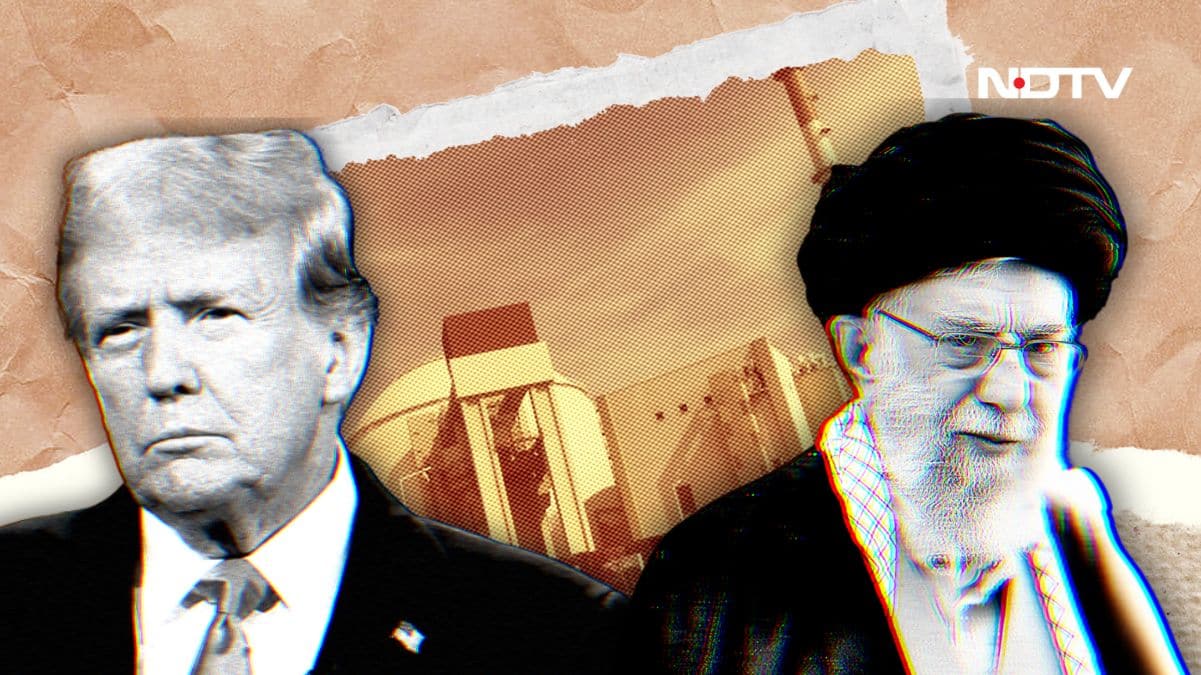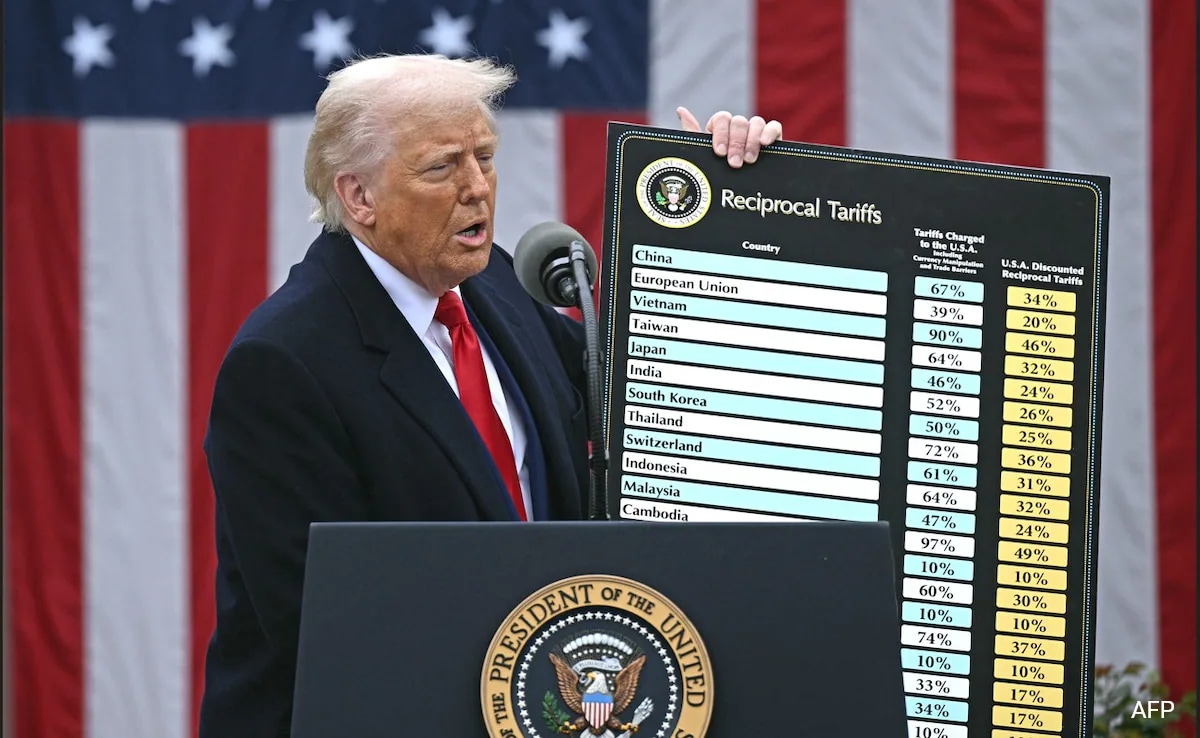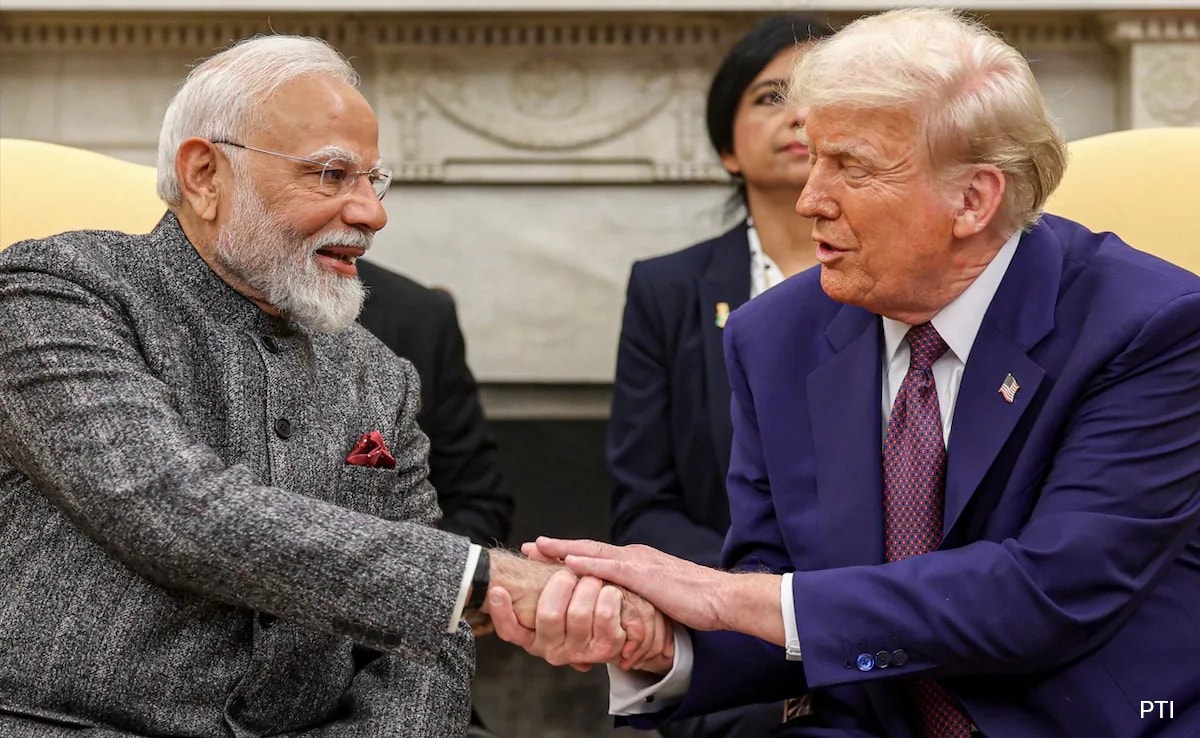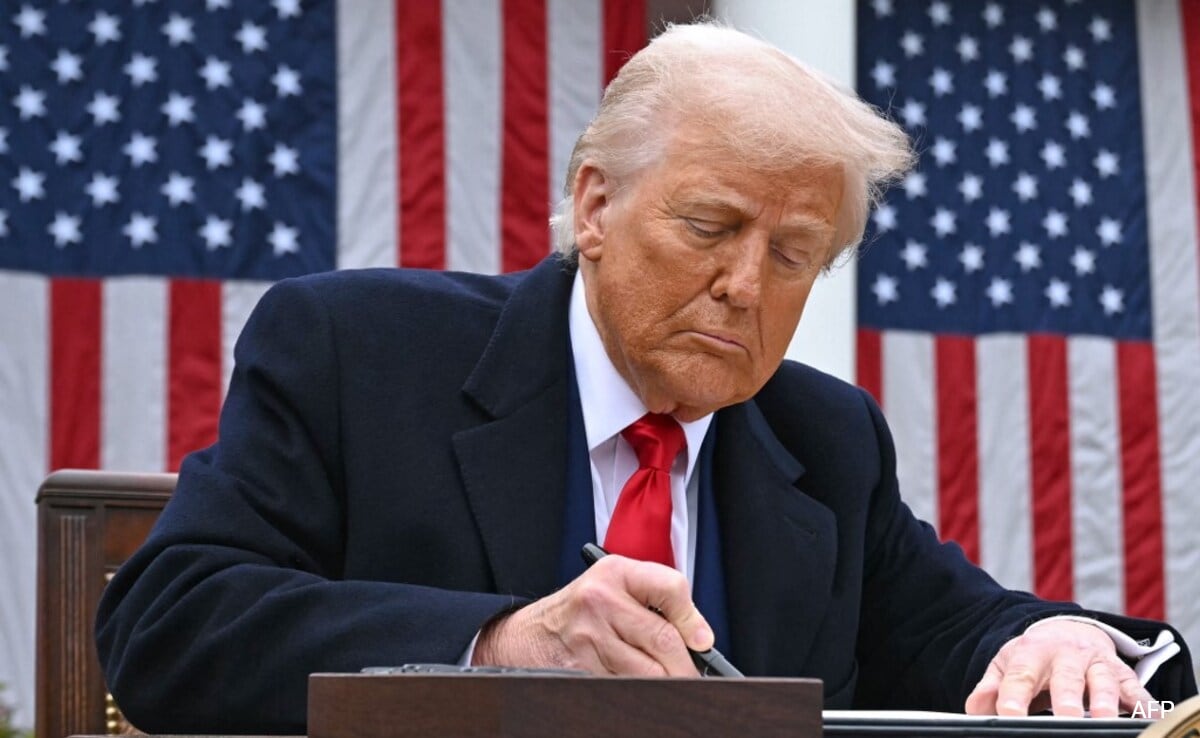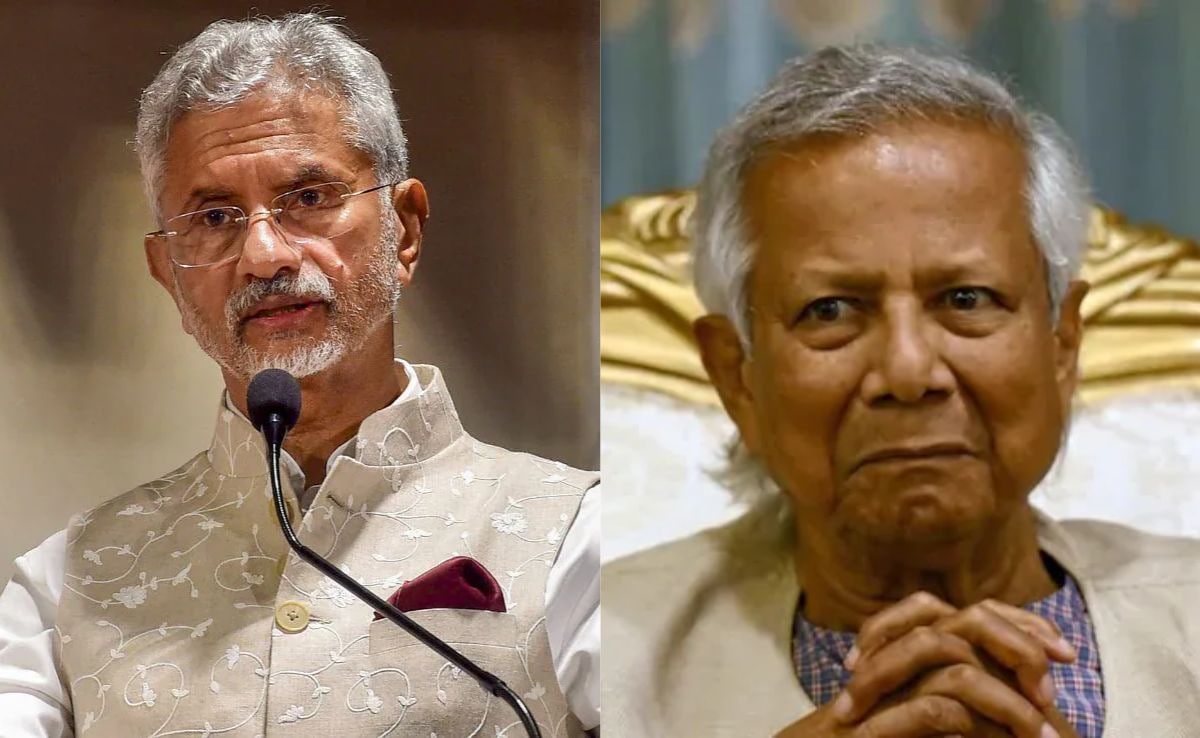Whoever said history repeats itself was not talking about Trump 2.0 and Iran. In 2018, during his previous term, Donald Trump unilaterally withdrew from the Joint Comprehensive Plan of Action (JCPOA) meant to restrain Iran from developing atomic weapons, calling it “the worst possible deal”. He further imposed a “maximum pressure” policy that led to an 81% contraction in Iran’s crude oil exports, its economic lifeline. He authorised the assassination of an Iranian general in Baghdad in early 2020. Last year, during Trump’s re-election campaign, an alleged Iranian plot to assassinate him was uncovered. On February 5, soon after re-entering the White House, Trump restored the “maximum pressure” policy against Iran. Subsequently, the US intensified consultations with Israeli leadership to prevent Iran’s nuclearisation. Why, then, exactly a month later on March 5, President Trump wrote to Iranian Supreme Leader Ayatollah Ali Khamenei proclaiming that he did not want to hurt Iran and its great people and suggested bilateral dialogue to resolve the nuclear issue?
‘Deception Of Public Opinion’
Iran’s reaction to this Trump initiative was equally fork-tongued. Even before he had read Trump’s letter, the Iranian Supreme Leader publicly spurned the offer, calling it a “deception of public opinion”. He pointedly added, “When we know they won’t honour it, what’s the point of negotiating?” Three weeks of Iranian fire-eating rhetoric against the United States and Israel followed. But then, on March 27, an adviser to Iran’s supreme leader said that Tehran “has not closed all doors to resolve its disputes with the United States and is ready for indirect negotiations with Washington.” Iranian Foreign Minister amplified, “Our policy is still to not engage in direct negotiations while under ‘maximum pressure’ and military threats, however, as it was the case in the past, indirect negotiations can continue.” Adding another twist to the tail, while President Trump’s letter was delivered by a UAE official, an Iranian response was conveyed via Oman, which hosted such indirect US-Iran talks during Biden’s presidency.
What exactly is going on amidst this shadowboxing, and what is the likely endgame?
A Little History
While Iran was never colonised by the West, it was often subject to political coercion aimed at economic exploitation, particularly by the Anglo-Persian oil company founded in 1908. In 1951, Iran’s populist Prime Minister Mohammad Mossadegh and the Iranian parliament nationalised the company, prompting the UK and the US to covertly arrange a successful coup against the elected government. They strengthened the Shah, a megalomaniac autocrat, who acted largely as a Western vassal and the US-appointed “Policeman of the Persian Gulf”. However, in early 1979, a protracted popular uprising deposed him and brought in Ayatollah Khomeini, a Shia clergyman and fierce critic of Shah and his Western backers. The fledgling Islamic Republic of Iran (IRI), a theocratic democracy, was born and tapped into Iranians’ adherence to Shia Islam and anti-Western sentiments to gain strength. The IRI survived a bloody eight-year-long war with Iraq that began in 1980, various internal dissensions and insurgencies, serious geo-political turbulences in the neighbourhood, particularly in Iraq and Afghanistan, as well as unmitigated Western eco-political sanctions and attempts to isolate the country and demonise its policies.
The Choking Of The JCPOA
For the past two decades, Tehran’s nuclear technology programme has been a recurring and growing source of tensions with the West and the regional powers. They believe that Iran, blessed with huge deposits of hydrocarbons, does not need an extensive and expensive nuclear programme. It is widely suspected to be a Trojan Horse to acquire nuclear weapon capability. Although Iran, a signatory to the Nuclear Non-Proliferation Treaty, has always denied such ambitions, it has also asserted its right to nuclear technology for peaceful purposes. After extensive negotiations, seven global powers, including the United States, and Iran agreed in 2015 on a JCPOA that put in place strict restrictions, including an International Atomic Energy Agency (IAEA) inspection regime on the Iranian nuclear programme, in general, and the uranium enrichment cycle in particular. In return, many of the Western economic sanctions on Iran were lifted. However, Trump 1.0’s withdrawal from the JCPOA in 2018 upended the arrangement and provided Iran with the justification to enrich uranium beyond the stipulated 20% limit.
Separately, the Iranian acquisition of substantive missile and drone capabilities has also raised eyebrows. Its robust support to some regional regimes and non-state actors, such as Hamas, Hezbollah and Houthis—collectively dubbed as the “Axis of Resistance”—has inflamed tensions with Israel and the US, which last month jointly reiterated their determination to disallow Iran to acquire a nuclear weapon capability. Israel, widely believed to have nuclear weapons, calls the Iranian nuclear programme “an existential threat”. Indeed, the antagonism between Jewish and Persian civilisations dates back at least to 587 BCE, when the first Jewish temple was destroyed by the Babylonian army under King Nebuchadnezzar II.
Suspicion Above All
This short but extensive background puts in broad relief the long mutual suspicion arrayed against any successful resolution of Iran-US-Israel hostility. However, the issue is as broad as it is long. Iran is already a formidably potent foe that has both battle-hardened, technologically competent and ideologically motivated military capability and a siege economy. If it further acquires deliverable nuclear weapons, it would become virtually invincible. In such an eventuality, Tehran would upend the longstanding Pax Americana in the Gulf and could configure the regional geostrategic stability that currently favours US-Israeli preponderance. Consequently, both Trump and Netanyahu are determined to prevent such a scenario from coming to pass.
At the same time, any objective SWOT analysis would show that Iranian nuclear assets are geographically diversified and well-defended—often physically located deep underground. Tehran has openly warned that any attack on its nuclear facilities would attract a swift and disproportionate response against the US-Israeli interests in the region. Further, such an act is likely to unsettle the crucial global oil and gas market. While the Muslim Ummah is not quite fond of Iran and its aggressive policies, no Muslim country would publicly approve of Iran being attacked in this manner. The country’s regional neighbours, many with pro-Iran Shia minorities, would be particularly wary of the resultant instability. Although the clergy-led government is brittle and unpopular, a foreign invasion is likely to provide a much-needed rallying cry for its support base. Israel’s right-wing government has its reasons for not only supporting any US military action against Iran but also participating in it, but Iranian retaliation could be even bigger and more vicious than seen last year. Moreover, a surgical destruction of nuclear capabilities would not be enough, the invaders may need to ensure that those are not revived. This may necessitate a regime change, and the past US experiences in the neighbourhood, viz. Iraq and Afghanistan, are dissuasive. Hence, a military campaign against Iran’s nuclear assets may not be the preferred option. It can, at best, be a Pyrrhic victory without any guarantee of success.
Will Economy Be The Decider?
Iran’s Achilles Heel is its economy, long hobbled by Western sanctions and drained by the heavy unproductive outgo on subsidies, defence and nuclear portfolios, and burdened with the need to support the regional proxies and allies. While Iran has a diversified economy, oil and gas exports are still its mainstay. The Western economic sanctions, in general, and the American “maximum pressure” campaign in particular, have seriously dented it. Although the sanctions caused serious socio-economic problems, such as public disaffection due to high inflation (40%; national currency has lost 90% of its value since 2018), youth unemployment (22.7%), etc., the regime stayed on course with its nuclear policy. During the past few months, however, the regime has been shaken as its regional proxies (in Gaza, Lebanon, Syria and Yemen) suffered serious setbacks. Further, Israeli air attacks and covert operations against Iran have exposed the latter’s vulnerabilities. The regime has, nevertheless, sought to exude strength. It remains to be seen if by agreeing to the indirect negotiations with the Trump administration, Iran is indicating a higher degree of flexibility. Tehran’s counter-offer may simply be a ploy to buy more time. For Trump, too, the negotiations offer a low-cost option: an agitprop strategy to divide the Iranian leadership. Last month, Russia, too, offered to mediate between the US and Iran; but the recent turbulence in the Kremlin’s relations with the White House over the Ukrainian conflict ceasefire might have put that offer in some doubt.
Given the low mutual credibility and long list of grievances, the proposed negotiations have a fairly small chance of success. Similar talks were held in Oman during Biden’s presidency, and they failed to resolve the issue. A parallel can be drawn with three well-publicised summits Trump held with North Korean leader Kim Jong Un that failed to denuclearise Pyongyang. Further, the motives of the two sides may not coalesce: For Trump, a successful conclusion would, by definition, require a deal tighter and more intrusive than the JCPOA. On the other hand, Iranian leadership would perhaps be happy to buy more time, thwart the threat of an all-out war and negotiate a reduction in the sanctions regime.
No Easy Deal
The negotiations are likely to be protracted and complex. In case a breakthrough nuclear deal is reached, the possibility of more ambitious workover straddling various geopolitical and economic issues in suspended animation for nearly five decades, such as softening of Iranian anti-US and anti-Israel profile, faster removal of sanctions, return of frozen Iranian assets as well as leveraging Iran’s economic opportunities for hydrocarbons and infrastructure, etc., cannot be ruled out. Such a comprehensive US-Iran makeover would have profound implications for the region as well as the global oil and gas ecosystem. Some details are likely to emerge by the time Trump pays his first foreign visit in his second term next month to three Gulf countries, viz. Saudi Arabia, the UAE and Qatar. The timeline for proposed indirect negotiations would have to keep in mind the lapse of the JCPOA architecture in October 2025, after which the “Snapback” of some other sanctions on Iran may be invoked.
At a different level, it would be fascinating to watch the forthcoming indirect and secret US-Iranian negotiations. After all, who can predict the outcome of a tryst between a self-styled “transactional” deal-maker and those who coined the word “Bazaar” and raised negotiations to the art of Mutazayedat, or overbidding. As Henry Kissinger put it pithily, albeit in a different context, “it’s a pity both sides can’t lose”.
(The author is a former Indian Ambassador and a specialist on the Middle East. He currently heads Eco-Diplomacy and Strategies, a Delhi-based consultancy.)
Disclaimer: These are the personal opinions of the author
